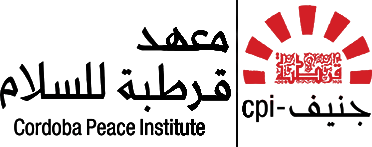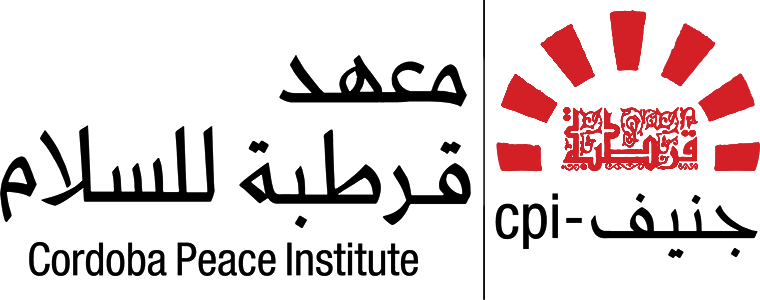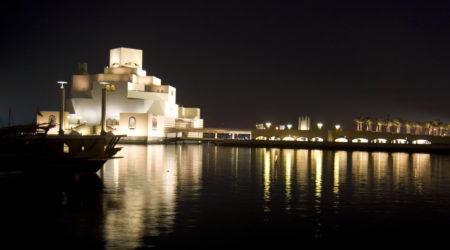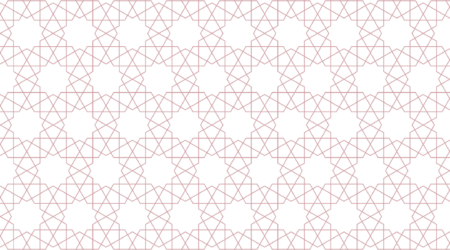Conceptual Tools for the Promotion of Peaceful Co-existence among Political Actors with Different Worldviews
Doha, 21 – 22 September 2016
Author: Lakhdar Ghettas
Editor : Alistair Davison
EXECUTIVE SUMMARY
The interaction of religion and politics in the public sphere remains at the heart of the political transition in the MENA region five years on since a wave of uprisings swept the region. In the Framework of the North Africa Programme , the Cordoba Foundation of Geneva in partnership with the Religion Politics and Conflict Desk within the Human Security Desk of the Swiss FDFA took special interest in promoting constructive political participation of new faith-based political actors as well as in alleviation tensions between these actors and others with different worldviews. Thus, Islamist and secularist experts and political leaders from across the region were brought together to ponder the question of the role of religion in the public sphere as well as explore collaboration for peaceful co-existence.
The first two meetings, held in spring 2016, focused on the issue of the distinction or differentiation between religious (matters of deen) and worldly practices (matters of dunya) within the Islamic tradition. Religious rules are influenced by doctrine and can be called the domain of prescription, as these rules concern the orthopraxy (correct conduct) of religion. In the domain of the influence of religion on “life”, however, rules function in a “preventive” way: a rule forbids certain actions, but gives options for a space where non-forbidden actions are possible. This distinction also allows for an explanation of how matters of “life” – distinct from religion in the prescriptive and ritualistic sense – are nevertheless “within the realm of religion,” and not separated from it. At the same time, matters of “life” fall within a realm of flexibility, and adaptation to contexts. This life-space is a location where actions can be agreed on across different religious communities, while remaining faithful to each community. From a religious point of view, it is what can become a “common civic space”. This can be understood as the equivalent of “secularity” in a manner which is acceptable from a cultural and religious standpoint.
The objective of the in the third meeting in this series, held on 21 – 22 September 2016 in Doha, was to deepen and build on discussions of the first two workshops by revisiting existing conceptual tools to promote cooperation among actors of different worldviews. Second, experts and political leaders who attended this third workshop tested the feasibility of three potential areas for common space collaboration in in North Africa, namely Islamist-secularists tensions between Tunisian actors in regard to political violence and religion; and alleviating Moroccan Salafi and secularist Amazigh tensions, as well as violence among Islamist and leftist university students’ groups in Morocco.
The 7th C. Medina Charter and 20th C. John Rawls’ Theory of Justice and Overlapping Consensus were reviewed by experts and political actors as two conceptual tools from different worldview sources with the potential of promoting the merits of cooperation for the common good of the community. A detailed analysis of the Medina Charter, from a conflict transformation perspective, showed how the architects of the Charter fractioned the conflict among Muslim and Jewish tribal leaders then and addressed their respective concerns; set and fulfilled goals in respect of power structures and interests; and offered means for arbitration and protecting rights and duties for all Muslim and non-Muslim inhabitants of Yathrib, renamed Medina (the city), after Prophet Muhammad’s migration there in 621.
Rawls distinguishes between two levels of realities. The primary level is that of prescriptive rules and the secondary level about the application of those rules. Between the two levels there is a space of possibilities. Communities with different prescriptive rules in their value systems and worldviews can choose to engage in a common action with a different community, each for its own reasons. In this way, different communities can live together in a space (action reality level) while each one finding justification and motivation for doing so in its own set of prescriptive rules (rules reality level). John Rawls calls this process of joint engagement by different communities to interact in the same space overlapping consensus.
Equipped with this conceptual background participants offered the following practical peace promotion projects:
- To alleviate Moroccan Salafi-secularist Amazigh tensions for a series of mediation space sessions between Salafi figures and elites of the secularist Amazigh movement. The immediate aim would be to denounce violence (verbal and physical). Because verbal violence often translates into physical violence on university campuses in Morocco the leadership of Islamist and secularist student movements should be strongly in this institutive.
- Tunisian participants recommended organising two small workshops on the issue of political violence and religion. The first to focus on the issue of political action, religion and violence. This workshop would serve as a mediation space between Islamists, secularists, and other Tunisian stakeholders in order to alleviate tensions and safeguard the nascent political transition. The second workshop would focus on reforming religious education in Tunisia and would involve secularist and Islamist experts in order to ponder the question of reforming religious education in Zeitouna University and promoting a moderate religious discourse.











